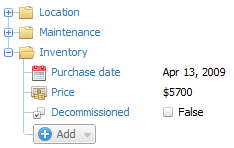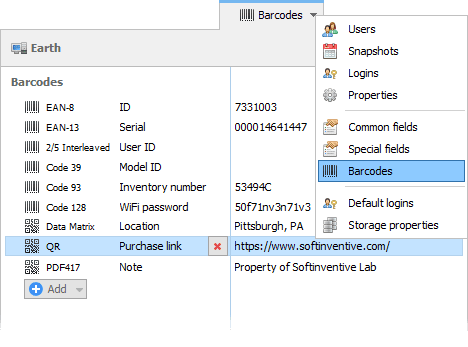
IT infrastructure documentation is a critical aspect of managing an organization's technology assets. It involves creating and maintaining accurate records of all hardware, software, and network components that make up the IT environment. Effective documentation helps ensure smooth operations, minimizes downtime and facilitates better decision-making.
IT documentation refers to the process of creating and maintaining records of an organization's technology infrastructure. This includes hardware, software, network components, and any other IT assets. The files provide a comprehensive overview of the IT landscape, including system configurations, dependencies, and relationships between different components.
A proper IT report is essential for several reasons. First, it helps ensure that all stakeholders have a clear understanding of the IT environment, including its components, configurations, and dependencies. This knowledge is critical for troubleshooting issues, planning upgrades, and making informed decisions about IT investments.
Second, IT documentation serves as a valuable reference for both current and future IT staff. As teams change and evolve, the manual ensures that institutional knowledge is preserved and can be easily shared with new team members. This reduces the learning curve for new hires and helps maintain continuity of operations.
Finally, an IT file is often required for compliance purposes. Many industries have specific regulations and standards that mandate certain levels of records, such as HIPAA in healthcare and PCI DSS in the financial sector. Maintaining accurate and up-to-date documentation helps organizations demonstrate compliance and avoid potential penalties.
IT documentation can be broadly categorized into the following types:
Each type of report serves a specific purpose and targets a particular audience. For example, IT infrastructure documentation software is typically aimed at end-users and provides instructions for using applications, while hardware files is more technical and is used by IT staff for maintenance and troubleshooting purposes.
To ensure that IT documentation is comprehensive, accurate, and up-to-date, consider the following best practices:
By following these best practices, organizations can ensure that their IT documentation is a valuable and reliable resource for managing their technology assets.
A corporate manual can be organized based on the type of information it contains. Here are some common categories:
Storing files digitally is the most effective way to ensure easy access, searchability, and security. Specialized IT documentation software like Total Network Inventory (TNI) can help streamline the process of managing and organizing corporate report.
Effective IT asset documentation offers several benefits, including:
Accurate documentation helps organizations keep track of their IT assets, including hardware, software, and licenses. This enables better asset utilization, reduces redundancy, and helps identify areas for optimization.
With detailed IT asset management documentation, organizations can easily track the lifecycle of their assets, from acquisition to retirement. This information can be used to make informed decisions about asset refresh cycles, budget planning, and resource allocation.
By maintaining up-to-date documentation, organizations can minimize errors and inconsistencies that can lead to downtime and other issues. Accurate files ensure that everyone is working with the same information and reduces the risk of miscommunication.
For example, if a critical system fails, up-to-date reports can help technicians quickly identify the root cause and implement a solution. Without accurate records, troubleshooting can be a time-consuming and error-prone process, leading to prolonged downtime and lost productivity.
A detailed hardware manual simplifies the process of rolling out new equipment and performing maintenance tasks. Technicians can quickly access the information they need to troubleshoot issues and perform upgrades.
For instance, if a new server needs to be deployed, accurate documentation can provide technicians with the necessary information about the server's configuration, network settings, and software requirements. This streamlines the deployment process and reduces the risk of errors or compatibility issues.
Well-organized files save time by enabling users to quickly find the information they need. This reduces the need for lengthy searches and eliminates the need to rely on institutional knowledge.
For example, if a new employee needs to troubleshoot an issue with a particular application, they can quickly reference the software report to find the relevant information. This reduces the learning curve and enables them to resolve issues more efficiently.
Comprehensive infrastructure documentation provides a clear picture of an organization's IT landscape. This helps IT teams make informed decisions about upgrades, replacements, and other changes to the environment.
For instance, if an organization is considering migrating to a new cloud platform, detailed documentation of IT infrastructure can help identify which applications and services are suitable for migration and which may require refactoring or redesign. This enables IT teams to plan and execute the migration more effectively, reducing the risk of disruptions or compatibility issues.
Records play a crucial role in effective IT infrastructure management. It provides a single source of truth for all aspects of the IT environment, enabling better decision-making and faster issue resolution. By maintaining accurate and up-to-date manuals, organizations can reduce downtime, improve efficiency, and ensure a more stable and reliable IT infrastructure.
For example, if a critical system goes down, IT teams can quickly reference the files to identify the root cause and implement a solution. Without an accurate report, troubleshooting can be a time-consuming and error-prone process, leading to prolonged downtime and lost productivity.
Similarly, when planning upgrades or changes to the IT environment, documentation provides a clear picture of the current state and helps identify potential impacts and dependencies. This enables IT teams to plan and execute changes more effectively, reducing the risk of disruptions or unintended consequences.
Carrying out IT documentation will be applicable for any business owner, as well as for all organizations that have a large technical park, use various software and modern communication channels. A multipurpose audit should be conducted in the case of:

Total Network Inventory (TNI) is a powerful IT documentation tool designed to simplify the process of managing and organizing IT assets. With TNI, organizations can easily create and maintain comprehensive IT manuals, including hardware and software inventories, network diagrams, and license information.
TNI offers a range of features that make it the best IT documentation software available, including:

By using TNI for IT asset management system documentation, organizations can streamline their report processes, reduce manual effort, and ensure that their documentation IT infrastructure is always up-to-date. TNI's intuitive interface and powerful features make it an essential tool for any organization looking to improve its IT system records.
TNI has now the ability to work with SQL servers, which will make the program a full-fledged reliable multi-user product.
We have significantly redesigned the mechanism and interface of the "Data Transfer" window based on your feedback to the support team.